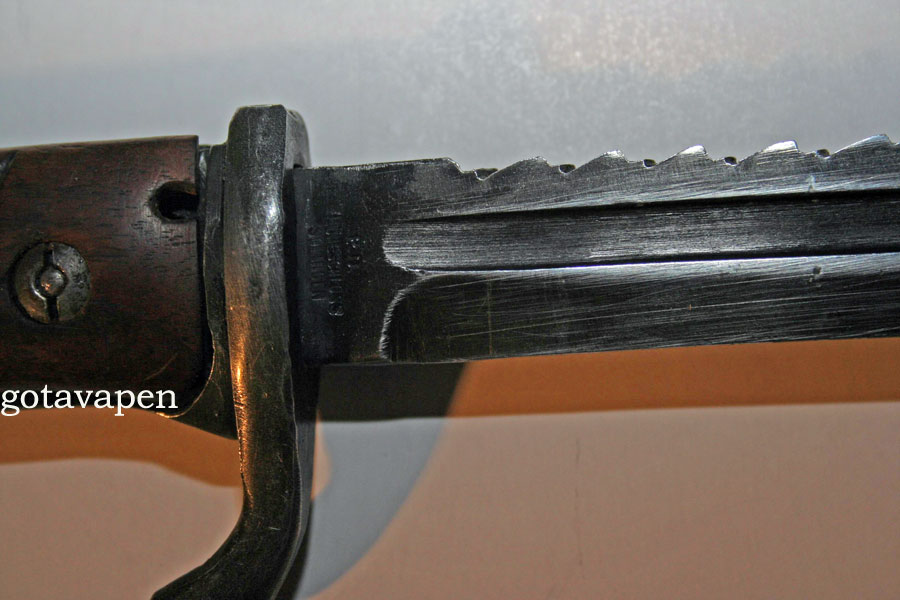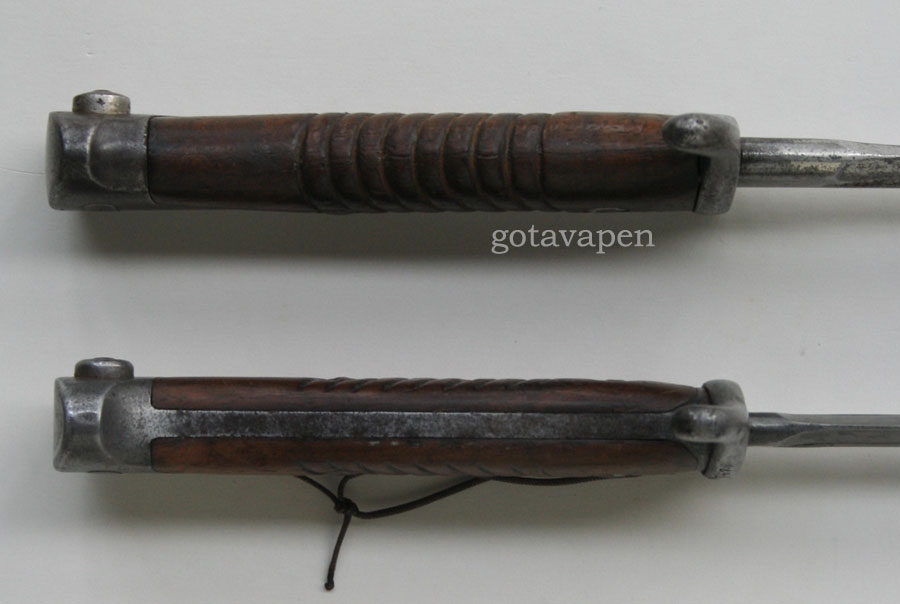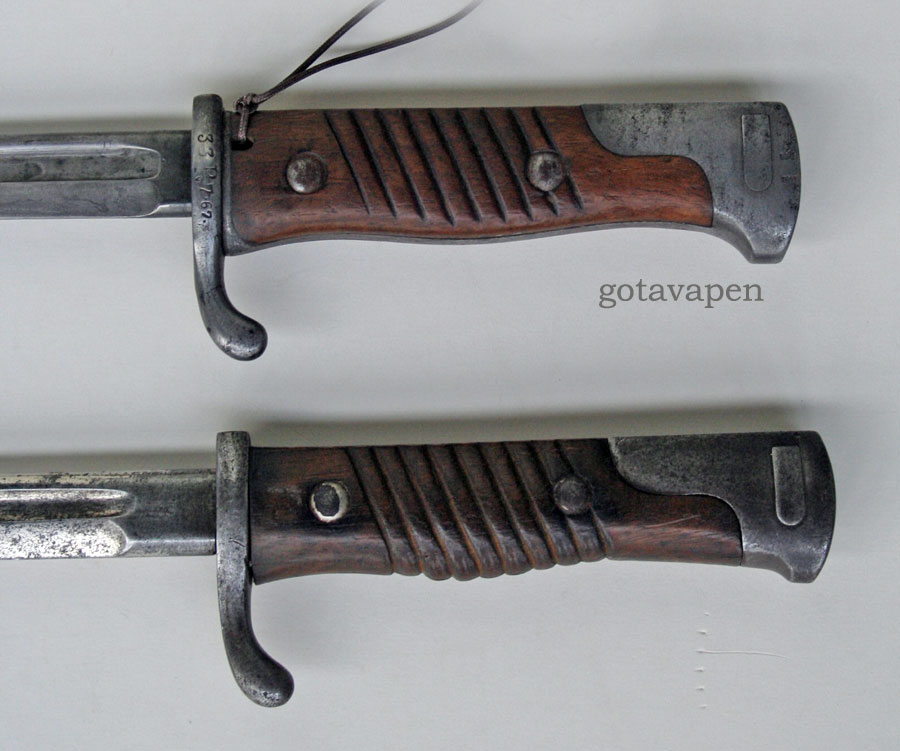

|
The bayonet types for the rifle Mauser M1898, which are presented here are only the most common and main groups that the German bayonets can be divided into. I have chosen to divide the bayonets into four main groups:
|
Bayonet type M1898

The long rifle M1898 with mounted M1898 sawback bayonet.

Bayonet M1898.
|
Bayonet M1898 Each federal state had its own preferences concerning equipment at the turn of the century. This was also the case with bayonets, called “Seitengewehr” in German, which means protection arm to be carried at the side of the body. The German bayonets were influenced by the French when they adopted bayonets. The basic rifle at the outbreak of the Great War 1914 was Mauser M1898. It was important for the Military to have equal length of rifle including bayonet as the main enemy – the French. The result was a long slender bayonet M1898. |

Bayonet M1898 n.A. made by Erfurt 1902

Bayonet M1898 n.A. on top and a.A. below.

Bayonet M98 existed like other German bayonets with sawback.
However the blade had a different shape, without flash-guardback.

|
Bayonet M1998 sawback |
|
|
Length of blade |
520 mm |
|
Length over all |
650 mm |
|
Bayonets were often marked with units number on the cross-guard. |
|
"105.
R. 5. 183." |

M98 a.A.
|
2 Patterns - Old and New.
The first
model had a grip made of one single piece of wood, which was wrapped around
the tang. At the turn of the century the Germans simplified and strengthened their bayonet grips. The new type is called n.A. (neu Art) and the grip was made of two halves from wood. The two-piece grips were introduced in 1902. These improvements were common for all the Military models of bayonets. |

M1898 old Pattern (a.A.) on top and new Pattern (n.A.) bottom

M1898 new Pattern (n.A.) on top and old Pattern (a.A.) bottom
|
Bayonet M1998 quillback |
|
|
Length of blade |
525 mm |
|
Length over all |
660 mm |
|
Bayonet M1898 Short. At the start of the war German military found out very soon that if a soldier plunged this type of bayonet through the ribs of his enemy, it would be stuck, because the enemy would bend forward and the blade would be stuck between the front and rear part of the ribs. The bayonet could not be removed, nor the rifle. This delay in close combat could be fatal. Another point was that these long bayonets were weak and likely to break. For these reasons the M1898 bayonets were shortened. At the same time the complete rifle and bayonet together became handier in the trenches. |

Shortened Bayonet M1898 above and below.

|
Bayonet M1998 short |
|
|
Length of blade ca |
290 mm |
|
Length over all ca |
430 mm |
| 1 | |
| 2 | |
| 3 | |
| 4 | |
| 5 |
|
References: |
|
| Robin Lumsden | Edged Weapons of Hitler’s Germany |
| John Walther | German bayonet, 1871-1945 |
| George T. Wheeler | Seitengewehr: History of the German bayonet 1919-1945 |
| Fredrick J Stephens | Fighting knives |
| SVEVAP 1976 | Bayonets then and now. |
|